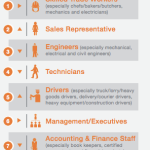With the release of the 2015 OECD rankings in literacy, numeracy and science, this week has predictably seen a fresh – and more virulent – outbreak of PISA hysteria.
The OECD really have to ask themselves if the monster they’ve created should now be euthanised. PISA has become a nuclear bomb without a guiding system. It’s a cherry-pickers charter par excellence, and if a few – well, a tsunami actually – of misleading tweets were all we had to put up with, that would be one thing. But in an excellent opinion piece in the TES,. William Stewart points to how the PISA juggernaut now not only presumes to tell governments what’s wrong with their education systems, through a series of dubious correlations, it’s now telling them what they need to do to make things better. I know people never click on links, so let me quote from Stewart’s article:
“And while countries like Germany and Japan may have changed education policy because of information from international surveys, there also seems to have been a shift to the point where governments are starting to see the survey ranking as an end in itself, as a key policy goal.”
“In Wales, the government is intent on “embedding Pisa skills in Welsh education” and has enlisted Schleicher to help explain to its teachers why Pisa is “so important” and how “GCSEs and the curriculum in Wales” are being changed to test “Pisa Skills”.
Yes, ‘PISA Skills’ is now officially a thing…..
“…many of the test scores used to calculate Pisa rankings are not from real pupils answering questions, but from a computer running a statistical programme to work out what the probable answer of a pupil who didn’t actually take the test would have been”
I confess that was news to me…
“it is potentially misleading for Pisa to recommend classroom strategies at all because the study does not question teachers about their methods. It relies instead on questionnaires filled in by pupils.”
What???
Apparently so. The categorisation of teaching strategies being adopted, and now judged, is not determined by someone from PISA observing teachers. It’s not even gleaned from teacher’s self-description. No, it’s taken from a 9-item agree/disagree questionnaire, filled in by students.
Here – as far as I can discern – are the items:
Those that indicate Teacher-Directed Strategies –
- At the beginning of the lesson, the teacher presents a short summary of the previous lesson;
- The teacher asks me or my classmates to present our thinking or reasoning at some length;
- The teacher sets clear goals for our learning;
- The teacher asks questions to check whether we have understood what was taught;
- The teacher tells us what we have to learn.
I know plenty of teachers who use project-based learning, that would tick every one of those boxes. So, are they really the indicators of ‘teacher directed strategies (as decided upon by students, remember)?
The items that indicate ‘student-oriented strategies’ are only marginally less contentious:
6. The teacher assigns projects that require at least one week to complete;
7. The teacher asks us to plan classroom activities or topics;
8. The teacher has us work in small groups to come up with joint solutions to a problem or task;
9. The teacher gives different work to classmates who have difficulties and/or who can advance faster.
The judgement of Twitter, based upon these highly questionable definitions of ‘teacher-directed’ and ‘student-oriented’ strategies was that successful countries favour the former, not the latter.
Except:
- The Singaporean government committed itself to project work and problem based learning in 2000. Project Work has been part of the curriculum for more than 10 years at both Primary and Secondary levels;
- In South Korea, ‘The Ministry of Education has tried to reform upper secondary school instruction to some degree, encouraging teachers to incorporate inquiry-based learning and problem solving… teachers reduce direct instruction and integrate multiple subject areas into group or individual projects. This method gained traction after success in independent schools, and is now used by many public schools in South Korea, with government support.”
- Finland has long adopted ‘student-oriented strategies’ and recently introduced cross-disciplinary approaches through its phenomenon based learning;
- Canada ‘Following a series of reforms in the 1960s and 1970s, the method of instruction in Canada changed from primarily rote learning to one focused on child-centered learning.’
- In Hong Kong ‘At all levels of compulsory education, the government promotes “life-wide learning.” This philosophy promotes learning in “authentic environments” such as science museums or farms’
(Source: Centre on International Education Benchmarking)
These countries, it seems to me, are behaving in their policy-making, the way all of the good teachers that I know behave in their classrooms. They’re not seeing good teaching as either ‘traditional’ or ‘progressive’. They’re blending teacher-led, and student-centred, not trying to decide between them. The extreme polarisation we’re currently witnessing between ‘Traditionalists’ and Progressives’, is incredibly damaging and not representative of the teaching profession as a whole. Because the PISA hysteria that has politicians all around the world spouting nonsense, arguing for the end of inquiry-based approaches, and a return to direct-explicit instruction, sees the world in black-and-white. This polarisation ignores the reality of what goes on in the leading nations, and assumes that getting to the top of PISA is the end goal, in itself, of a successful education system. As today’s piece in The Conversation makes clear, be careful what you wish for. Singapore’s success is more likely due to the fact the 80% of primary, and 60% of secondary students, get private tuition after school. Believe me, I’ve seen them on the Singapore subways, exhausted after yet another 12-14 hour day. Is that what we want for our kids?
In my view (and it’s a view shared by an increasing number of educators, but sadly nowhere near enough politicians) is that PISA only conclusively tells us one thing. It tells us about the cultural attitudes towards education in OECD countries. As John Jerrim elegantly demonstrated, there isn’t anything inherently wrong with the Australian education system – not when you look at the scores of Asian students who have gone through it. Jerrim looked at the performance of 14,000 Asian/Australian kids who took the PISA 2012 maths test. These students had spent their entire academic career in Australian schools. Their Maths scores were higher than ANY other OECD country (other than Shanghai, and that’s never been a country).
It’s been a similar story in the UK (and probably in the US, I haven’t checked): Asian kids excel, even when they’re not being educated in Asia. Cultural attitudes- and pressure- to success in school makes the difference. Despite this, we’re seeing the triennial casting around in both the UK and Australia for someone to blame. If PISA is the sole purpose of education, don’t blame the schools in countries like the UK and Australia, blame parental attitudes in the West. But how did the UK become the 5th biggest economy in the world – without the benefit of rich natural resource – if it’s so rubbish at Maths, English and Science? Similarly, how has the US consistently been the innovation hothouse of the world, and yet so consistently average in PISA assessments? If the purpose of education is to score well in tests, go ahead and judge schools and systems by PISA rankings. But if the purpose is to build vibrant economies, and/or happy, informed citizens, equipped for the future, could we please find a different set of measures?
Related Posts
Also published on Medium.



